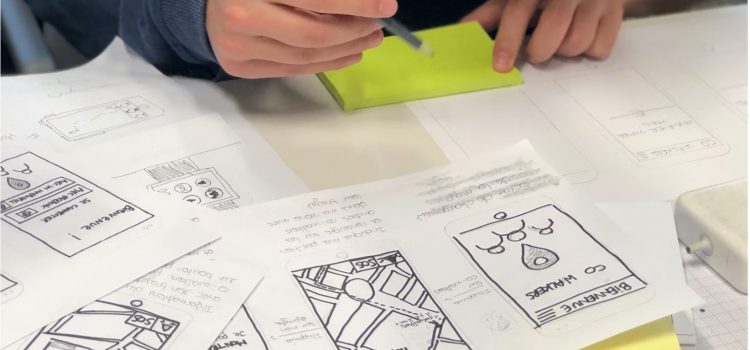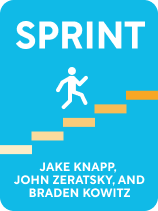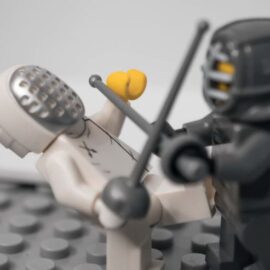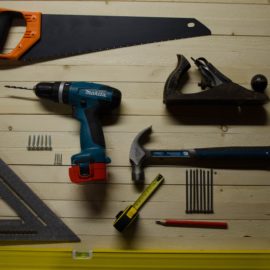

This article is an excerpt from the Shortform book guide to "Sprint" by Jake Knapp, John Zeratsky, and Braden Kowitz. Shortform has the world's best summaries and analyses of books you should be reading.
Like this article? Sign up for a free trial here.
What should you do before your first sprint planning meeting? How does Jake Knapp suggest you prepare?
With the help of John Zeratsky and Brian Kowitz, Jake Knapp ran hundreds of successful sprints at Google and other companies like Lego, Airbnb, and Slack. According to Knapp’s book Sprint, there are four important steps you should take in preparing for your first sprint planning meeting.
Keep reading to learn how to prepare for your first sprint planning meeting, based on Knapp’s four steps.
Preparing for the First Sprint Planning Meeting
According to Knapp, Zeratsky, and Kowitz, the success of your sprint will depend on your preparation of four elements: deciding which idea you want to test, getting the timing right, having the right people in the room, and creating an optimal space for your sprint. Below, we’ll detail the complete preparation guide for your first sprint planning meeting, according to Jake Knapp’s method.
Step 1: Choosing Your Idea
In preparing for your first sprint planning meeting, the authors suggest that you first decide which idea you want to develop and the problems you need to solve in your sprint. For clarity’s sake, when we refer to an “idea,” we mean the idea that will eventually become the prototype product you test at the end of the week. When we refer to “problems,” we mean the problems you need to solve to develop your idea into a workable design. The authors argue that you can test practically any idea or problem in a sprint.
For example, say you work for a restaurant that wants to test out a new order kiosk. Your ideas would be the elements of the kiosk itself, like the design of the menu or the shape and size of the screen. The problems you face might be how to make the kiosk user-friendly, or how to entice customers to use it in the first place. You’d need to figure out how to make your order kiosk accessible and desirable before the design can come together.
| Does Your Idea Fit the Scope of a Sprint? Knapp, Zeratsky, and Kowitz state that you can test almost any idea in a design sprint, but other designers disagree. In one designer’s experience, you need to answer several questions before you can determine whether running a sprint for a certain idea is worth your time: – Is the company as invested in the product idea as you are? If there is little interest from company leadership, they may not implement the results you get from your sprint. In this case, the time and energy spent on the sprint wouldn’t be worth it. – Has the company worked on the same idea before? If your company has already tried (and failed) to develop the idea you want to test, Jansen says it’s a good indicator that they’re willing to see the project through. They’ll be open to the alternative solutions you might find in your sprint. If they’ve never considered the idea before, it isn’t part of their larger plans, and they may be unwilling to commit to a sprint. – Is your company open to the process of discovery in a sprint? You learn new things about your product with every step of a design sprint. By the end, customer feedback may lead you to results you never expected. If your company already has a specific vision for a product that they’re unwilling to deviate from regardless of the feedback they receive, that product is probably not the best choice for a sprint. |
Step 2: Understanding the Timeline
The next step in preparing for your first sprint planning meeting is to familiarize yourself with the sprint’s timeline. After a lot of testing, Knapp discovered that five days (Monday through Friday) works best for design sprints. It’s enough time to create a prototype but not long enough for people to lose momentum and focus.
(Shortform note: Jake Knapp may have invented the Design Sprint and settled on its specific five-day timeline, but he didn’t invent the idea of sprints altogether. Traditional sprints were developed as a tool for agile project management in the 1990s by the creators of Scrum, a framework that helps teams structure projects to encourage reflection, experiential learning, and constant improvement. Scrum sprints can be one to two weeks long, during which a team completes a set of previously specified tasks. They’re still widely used, especially by software developers.)
Each day of your sprint starts at 10:00 am and ends at 5:00 pm, broken up by an hour-long lunch. (The exception is Friday, which starts at 9:00 am to give enough time to complete five customer interviews.) The six working hours of a sprint are shorter than an average workday to compensate for the intense and focused nature of the tasks.
| Product Development Processes: Sprints vs. Working Backward Some critics argue that the constraints imposed by the shortened timelines of “agile” approaches like sprints suppress growth potential in new products, limit the designers’ ability to improve existing products, and make data from customer testing unreliable due to the use of underdeveloped prototypes. One alternative to sprints is a “working backward” approach—coming up with a fully-realized product idea and sticking to that idea as you work to make it a reality. This method is less flexible than sprints, but it lacks the same time constraints and allows companies to plan longer-term projects with products they may not have the capability to make or prototype yet. Some companies combine the two approaches, deciding which one is best to use at different stages of product development. |
Step 3: Building Your Team
According to Knapp, Zeratksy, and Kowitz, your sprint team should have no more than seven members. Having more than seven hinders the decision-making process and makes it difficult to maintain the group’s attention. To prepare for your first sprint planning meeting, start by picking two essential roles, which they call the Decider and the Facilitator. For clarity, we’ll call them the team leader and the sprint coordinator.
- Your team leader will have the final say on all major decisions in the design process. This should be someone with authority in your organization—someone from upper management or the person who is already the lead on the larger project your sprint falls under, for example.
- The sprint coordinator handles all the logistics of the sprint. They maintain the schedule and keep the team on task. They also moderate debates and record everything that’s said during group discussions.
When choosing the rest of your team, include designers and engineers who understand how your products are actually made. However, these shouldn’t be the only members of your team. People with other expertise—like a finance specialist who knows how a project is funded or a marketing associate who handles social media—can offer valuable context for the design process. The more diverse your team is, the more innovative solutions you’ll discover.
| Creating a Healthy Team Environment Here, the authors place great emphasis on finding specific members for your team and filling specific roles. However, in Smarter Faster Better, Charles Duhigg argues that selecting the individual members isn’t the most important factor for building an effective team. Rather, teams produce the best results when there’s an environment of psychological safety, regardless of who’s in the group and what their specific role is. All members of your team need to feel like they can share their ideas and opinions without facing the possibility of reproof or humiliation. Duhigg suggests you foster psychological safety in two ways. First, give all members of the team an equal amount of time to speak during group discussions to show that no single person’s input is more important than another’s. Second, practice social sensitivity by noticing and acknowledging the emotional cues of your team members, like body language and tone of voice. If you notice that a team member seems frustrated or hesitant about something, for example, encourage them to voice their feelings. This will show each individual that the team respects their emotions and opinions, and it will help you address points of conflict as they arise. |
Step 4: Creating Your Space
The authors suggest that, prior to your first sprint planning meeting, you book a room you can use for the whole week. Don’t move spaces during the sprint. You’ll also need to reserve a second space to conduct customer interviews on Friday.
Devices such as laptops and cell phones should be off-limits during your sprint to ensure that your workspace is as distraction-free as possible. You can always check your phone during breaks or step out if you need to make a call.
(Shortform note: It may seem like a big ask to have people keep their phones off for an entire work week, but the possibility of distraction is real. A 2019 study found that, on average, Americans check their phones 96 times a day, or about once every 10 minutes. Every break in your attention takes you away from the task at hand, limiting your potential for productivity. To avoid temptation, ask yourself why you want to pick up your phone every time you feel the urge. Is it something that really needs your attention now, or are you trying to distract yourself from what’s happening in the present moment?)
| How to Create a Productive Workspace You have to get a lot done in a short amount of time during your sprint, so it’s important that you create a workspace that’s conducive to productivity. First, your room should be comfortable and spacious since you’ll be spending a lot of time there. With enough space, people will have opportunities to stand up, walk around, and stretch during the day. Even a small amount of movement during a workday has proven benefits for mental and physical health. Additionally, choose a room that has plants in it, or bring some in to have in the room during your sprint. Studies show that having greenery in your workspace helps to reduce stress, promote creativity, and increase productivity. Finally, keep your sprint room tidy and clean. The more organized your space is, the better you’ll be able to focus. |

———End of Preview———
Like what you just read? Read the rest of the world's best book summary and analysis of Jake Knapp, John Zeratsky, and Braden Kowitz's "Sprint" at Shortform.
Here's what you'll find in our full Sprint summary:
- How to build and test a prototype in just a five-day work week
- The step-by-step processes for planning and completing a sprint
- How to conduct one-on-one interviews with your customers






